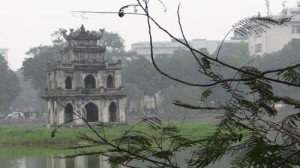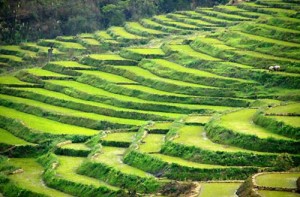Country name: Socialist Republic of Vietnam
Capital: Hanoi
Geographical location: (main land)
Longitude: from 102o09’ to 109o30’ East
Latitude: from 8o10’ to 23o24’ North
Mainland area: 331,690 km2
Distance (air way) between the Northernmost point and the Southernmost point: 1,650 km
Distance East-West at max: 600 km (Northern), 400 km (Southern); at min: 50 km (Quảng Bình, Central Part)
Population: more than 80 millions (2002) in which Age structure is female 51%, male 49%.
Administrative divisions: 63 provinces and municipalities (Hanoi, Ho Chi Minh City, Hai Phong City, Da Nang city, Can Tho City). See more: How many cities and provinces in Vietnam?

- Mountains, hills: Mountains and highland hold 3/4 of the total area. The mountain system extends from the Northwest border to the eastern side of the South, 1,400 km in total length. The highest point: Fan Si Pan 3,143 m.
- Deltas:
- Red River Delta: 15,000 km2.
- Cửu Long River Delta: 40,000 km2.
- Main rivers: total length of all rivers in Vietnam is 41,000 km with total flow is nearly 300 billion m3 of water, and 3,100 km of canals.
Red River’s length is 1,149 km in which 510 km is on Vietnam territory.
Mekong (Cửu Long) River’s length is 4,220 km in which 220 km is on Vietnam territory.
Climate: Vietnam is located in the tropical and temperate zone characterized by high temperature and humidity all year round, especially in rainy season.
- Temperature:
- The average rainfall each year:
- Hanoi: 1,763 mm
- Huế: 2,867 mm
- Hồ Chí Minh City: 1,910 mm
- The average air humidity is over 80%, even 90% in rainy season and in drizzly weather.
Transportation:
- Roadways: 86,327 km (1995); main distance (overland):
- Hanoi-Hồ Chí Minh City: 1,738 km
- Hanoi-Điện Biên Phủ: 474 km
- Hanoi-Hải Phòng: 102 km
- Hanoi-Huế: 654 km
- Railways: 3,219 km (1995), includes 5 lines.
- Air way: The Vietnam Airlines has 17 international routes and 16 domestic routes. Large airports are: Nội Bài (Hanoi), Tân Sơn Nhất (HCM City), Đà Nẵng, Phú Bài (Huế), Cát Bi (Hải Phòng), Điện Biên (Lai Châu), Vinh (Nghệ An), Nha Trang, Cần Thơ.
- Main ports: Hòn Gai, Hải Phòng, Đà Nẵng, Qui Nhơn, Cam Ranh, Vũng Tàu, Sài Gòn.

Lying on the eastern part of the Indochinese peninsula, Vietnam is a strip of land shaped like the letter “S”. China borders it to the north, Laos and Cambodia to the west, the Eastern Sea to the east and the Pacific Ocean to the east and south.
Mountains and hills cover two thirds of the mainland. Areas above 500m in altitude account for 70 percent of the mainland. The most grandiose and highest mountain ranges lie in the west and northwest of the country.
Việt Nam’s territorial waters make around 1,000,000 km2, with over 3,000 km long coastline lines. Việt Nam lies along the Indochinese Peninsula and circles the old southeastern part of the Asian continent with its back turned to the Eastern Sea (Pacific Ocean). These mountain and sea areas boast a diversity and richness in natural resources as well as minerals.
In the South West area of Central Vietnam, there is a huge “mountain-highland” at over 1,000m high, covered by basalt soil ideal for growing tropical and temperate industrial crops (rubber, tea, coffee and cacao).
Along the coastline, from the North to the South, Vietnam has lots of beautiful beaches, especially Ha Long Bay with more than 3,000 islands, is listed by UNESCO as a World Natural Heritage site. See Vietnam World Heritages.
Jungles along the country are home to rare, precious animals and plants. In addition, there are some sub-climate regions in Viet Nam including regions with a temperate climate and unique sight-seeing, such as SaPa (Lao CAI Province), Da Lat (Lam Dong province) and plenty of lakes, streams, falls and extraordinary caves.
The mineral coal such as mines, bauxite and precious metal are mainly in the North and the Central; in the offshore and coastline we have lots of oil field and natural gas. In the rivers, lakes and territorial waters we have variety of fishes, shrimps and aqua products.
Source Chinhphu.vn

